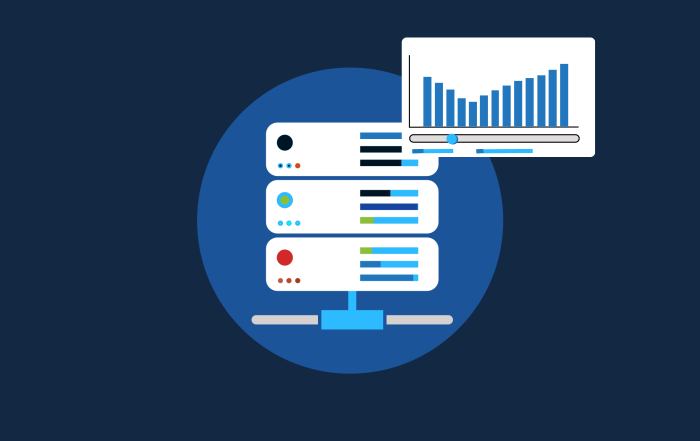Beyond the Buffer: Latency Optimization
Latency refers to the delay experienced when data travels across a network. High latency leads to slow loading times, choppy video calls, and...


Geographic Information Systems (GIS) mapping has emerged as a powerful tool that transcends geographical boundaries and industries. It’s a technology that harnesses the power of spatial data to provide insights, make informed decisions, and optimize operations. In this article, we’ll explore the transformative impact of GIS mapping on Internet Service Providers and how it enhances their services.
GIS mapping has been a game-changer across various sectors, from urban planning and agriculture to disaster management and logistics. Its ability to visualize, analyze, and interpret geographic data has unlocked countless possibilities. Today, we’ll focus on how this GIS mapping is revolutionizing the world of ISPs.
ISPs are constantly striving to expand their network coverage while maintaining service quality. GIS mapping plays a pivotal role in this endeavor. By leveraging accurate geospatial data, ISPs can meticulously plan and execute network expansions. They can identify underserved areas and pinpoint potential growth opportunities with precision, reducing the risk of overinvestment or leaving areas underserved.
Furthermore, GIS mapping helps ISPs comply with regulatory requirements by providing transparent documentation of their network coverage.
Efficient resource allocation is a cornerstone of success for ISPs. GIS mapping allows ISPs to allocate resources effectively by considering factors such as population density, usage patterns, and potential growth areas. This leads to cost savings and improved service quality, as resources are channeled where they are needed most.
Real-world examples showcase the benefits of GIS mapping in resource allocation, from reducing service downtime during peak hours to optimizing the deployment of maintenance teams.

The ability to monitor the network in real-time is a significant advantage that GIS mapping offers to ISPs. By visualizing network performance and identifying potential issues based on location, ISPs can proactively address problems. This not only ensures a better user experience but also reduces downtime and maintenance costs.
The rapid resolution of connectivity issues is critical in the highly competitive ISP landscape, and GIS mapping provides the tools needed for quick response.
In the digital age, data is king. GIS mapping empowers ISPs with data-driven insights. Analyzing geospatial data helps ISPs make informed decisions about service upgrades, marketing strategies, and customer targeting. By understanding their coverage areas and customer demographics, ISPs can tailor their offerings to meet specific regional needs.
ISPs can use GIS mapping to analyze their broadband coverage areas, ensuring they are delivering on their promises. Accurate coverage data is essential for marketing campaigns and regulatory compliance, and GIS mapping ensures transparency.
Identifying network congestion points and areas with slow connectivity is made easier with GIS mapping. ISPs can enhance user experience by resolving these issues promptly, leading to happier customers and reduced churn rates.
GIS mapping allows ISPs to segment their customer base based on geographical data. This enables personalized marketing campaigns and service offerings tailored to specific regions, resulting in higher customer satisfaction and retention.
By analyzing the coverage of competing ISPs, companies can make informed market strategies and expansion plans. GIS mapping provides valuable insights into areas with high competition and potential underserved markets.
During natural disasters or emergencies, ISPs can collaborate with emergency services using GIS mapping. Accurate geospatial data plays a crucial role in quickly restoring communication services, aiding in disaster recovery efforts.
While we’ve discussed the benefits of GIS mapping for Internet Service Providers in terms of network optimization and customer service, there’s another valuable aspect that deserves attention: the ability to secure government grants. Government grants can significantly aid ISPs in expanding their infrastructure and providing better services to underserved communities. Here’s how GIS mapping plays a crucial role in this endeavor:
GIS mapping empowers ISPs to identify areas with limited or no access to broadband services accurately. By overlaying their network coverage data with demographic and socioeconomic information, ISPs can pinpoint regions that meet the criteria for government grant eligibility, such as rural or economically disadvantaged areas. This precise identification is key to making a compelling case for grant applications.
When applying for government grants, ISPs need to provide comprehensive and data-driven proposals that demonstrate the impact of their projects. GIS mapping allows ISPs to present a clear picture of their current network coverage, the areas in need of improvement, and the expected outcomes of grant-funded projects. This level of detail enhances the credibility of grant applications and increases the likelihood of securing funding.

GIS mapping is instrumental in estimating the costs associated with network expansion or infrastructure upgrades. ISPs can use spatial data to calculate the expenses of laying new cables, installing equipment, and providing service to target areas. This information is critical for budgeting and project planning, both of which are essential components of grant applications.
Many government grants come with specific requirements and reporting obligations. GIS mapping helps ISPs maintain accurate records of their network expansion progress. They can use mapping data to demonstrate compliance with grant conditions, which fosters trust between the ISP and the grant-giving agency.
Collaborating with local government entities and other stakeholders is often a requirement for securing government grants. GIS mapping provides a common platform for sharing and analyzing spatial data, facilitating collaboration between ISPs, local governments, and grant providers. This collaboration can strengthen grant applications and ensure that projects align with community needs and development plans.
Incorporating GIS mapping into the process of securing government grants not only increases the chances of success but also promotes responsible and targeted investment in expanding broadband infrastructure. By leveraging the power of geospatial data, ISPs can make compelling cases for grants, thereby contributing to the broader goal of bridging the digital divide and ensuring equitable access to high-speed internet services.
Final Thoughts
GIS mapping has become an indispensable tool for ISPs, revolutionizing network planning, resource allocation, grant funding, decision-making, and customer service. With GIS mapping, ISPs have the power to enhance their operations, provide better services, and contribute to the advancement of digital connectivity on a global scale. By harnessing the transformative potential of GIS mapping, ISPs can navigate the ever-evolving landscape of the internet service industry with confidence and precision.
To read more about the Sonar and Vetro FiberMap integration, please refer to our knowledge base documentation here: https://docs.sonar.expert/integrations/vetro-fibermap-integration-overview

Latency refers to the delay experienced when data travels across a network. High latency leads to slow loading times, choppy video calls, and...

I’m happy to announce our integration with ServerPlus. ServerPlus already provides call center services to a number of ISPs that use Sonar,...

In the fast-paced world of technology, customers demand quick and easy access to internet services. However, identifying service coverage in their...